This is an image of Helene.
NASA
Helene
Helene was discovered on
February 29, 1980, by French scientists. Although Helene is very far away, they were able to
see this small moon by using a powerful telescope and fancy camera.
A few months later, the Voyager spacecraft was
able to take pictures of Helene from space.
Helene is the 6th
farthest moon from Saturn. Helene is one of the small moons, and is about the size of a medium city.
You might also be interested in:
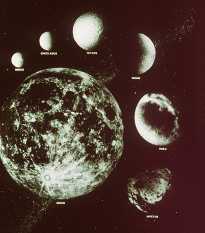
This is an image of the Earth's moon, shown in the lower left, with the icy moons of Saturn. The moons in order, starting from the top left are: Mimas, Enceladus, Tethys, Dione, Rhea, and Iapetus.
...more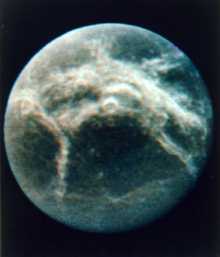
Dione was discovered by G. Cassini in 1684. Dione is the 7th farthest moon from Saturn. It is a small icy moon, lightly cratered, with white streaks across the surface. Dione is about as wide as the Oregon
...more
The surface of Dione does not have many craters, which means that the surface has changed in the past. Instead of many craters, it has wispy white streaks like the ones on Rhea, which go for many kilometers
...more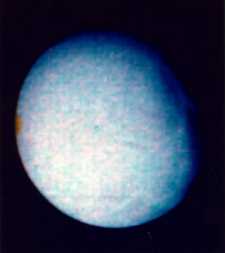
The surface of Enceladus does not have many craters. Instead it has grooves similar to those found on Ganymede. These grooves extend for many kilometers over the surface. The presence of grooves indicates
...more
Helene was discovered on February 29, 1980, by French scientists. Although Helene is very far away, they were able to see this small moon by using a powerful telescope and fancy camera. A few months later,
...more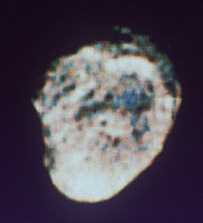
Hyperion was discovered by W. Bond in 1848. Hyperion is the 3rd farthest moon from Saturn. Hyperion is about the size of a large county or small state. One of the main things about Hyperion is its unusual
...more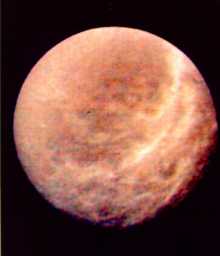
Rhea was discovered by G. Cassini in 1672. Rhea is the 5th farthest moon from Saturn. Rhea is one of the icy moons. Rhea is about as wide as the state of California is long. Rhea is has many craters and
...more
The surface of Rhea is like many icy moons. Rhea is heavily cratered (even if it doesn't look like it in this picture). In fact, Rhea is has an many craters as Mimas, the "death star" moon. It also appears
...more












